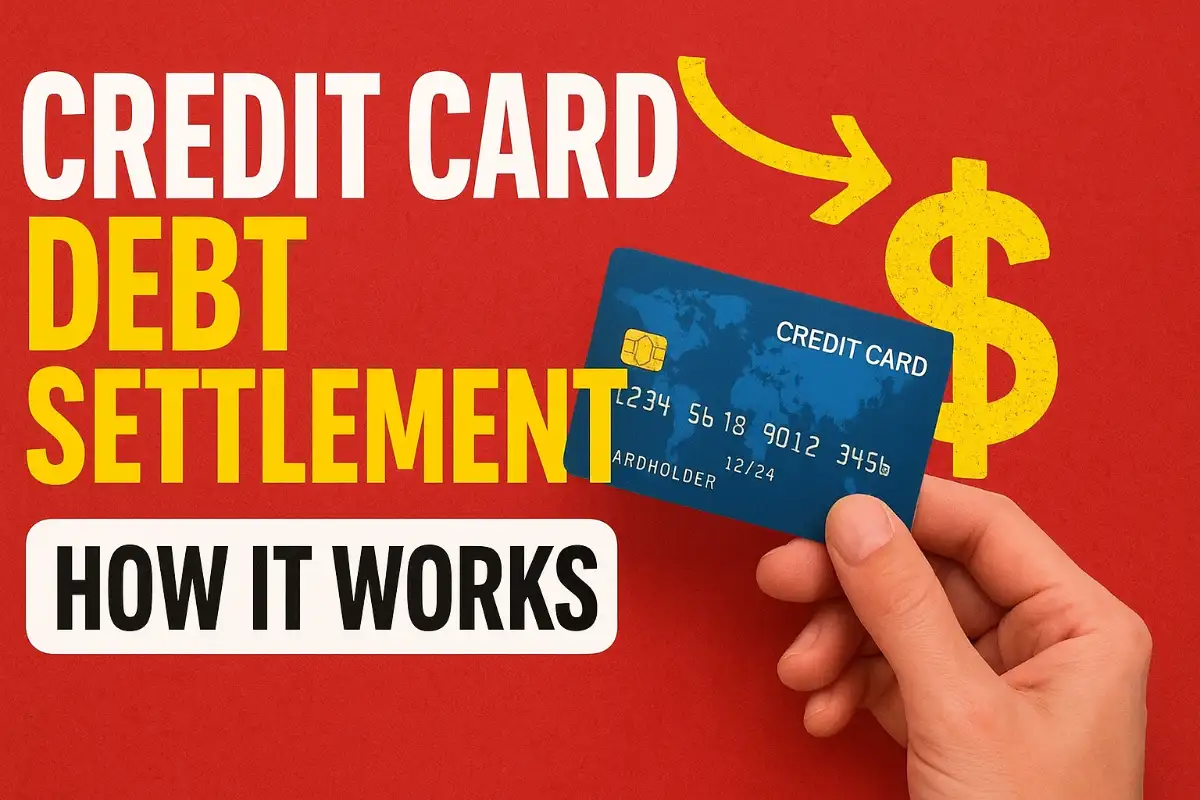Credit Card Debt Settlement Process: The credit card is an important component of our money spending, saving, and budgeting in the modern high-paced world. Online shopping to the routine purchases, these tiny plastic cards have simplified life, however, when it is not spent wisely it may cost one dearly.
In the time you have missed a credit card payment or found yourself deep into increasing debt, knowing how the credit card settlement process works can help you make back on track and save your credit score.
What Is Credit Card Settlement?
Using credit card, you will have to pay the entire amount owed to the due date. Failure to pay will mean interest and penalties begin to accumulate – and your credit rating will suffer.
There are other occasions when you may not be able to pay all the money required and then you can make some agreements with your bank or card issuer to pay less than that. This is known as credit card settlement.
In effect, the bank accepts to receive a perfunctory advance sum of money to settle your account, rather than pursue the entire balance. The ultimate settlement balance normally relies on:
- The total amount owed
- Your financial situation and repayment capacity
- The type of card and your relationship with the bank
Steps in the Credit Card Settlement Process
Each bank may have slightly different procedures, but the general process follows these steps:
- Reach Out to Your Bank – Contact your lender and explain your financial difficulty. Be honest about why you can’t repay the full amount.
- Submit a Written Request – The bank may ask for a written application or letter stating the reason you’re unable to clear the debt.
- Bank Reviews Your Case – After reviewing your income, expenses, and repayment history, the bank decides whether to offer a one-time settlement.
- Settlement Approval or Rejection – In case of approval, the bank gives a definite amount and a period of payment. Otherwise, they can present other options like installment payment or temporary reprieve.
- Make the Payment – Once you pay the agreed settlement amount, the bank closes your account and reports it as “settled” to credit bureaus.
💡 Tip: Always get written confirmation from the bank once the settlement is complete.
How Refunds Are Processed on Credit Cards
You may even refurbish a product or cancel a service payment that has been made with the use of a credit card. Where this happens, the money is refunded to the same card.
Here’s how the refund process generally works:
- You return the item to the retailer or service provider.
- The retailer processes the refund to your credit card.
- The refund reflects in your card account within 7–14 business days, depending on the bank and retailer policy.
- If you earned any reward points or cashback from the original purchase, those may be reversed.
Important Points to Remember
- Always check your credit card statement after a settlement or refund to ensure everything is updated.
- Keep a record of all emails, letters, and payment receipts related to your settlement.
- A “settled” status on your credit report may affect your future loan eligibility, so it’s best used only as a last resort.
- Whenever possible, aim to repay your debts in full to maintain a healthy credit profile.
Final Thoughts
Credit cards are flexible and convenient, however, one should learn to use them responsibly. See the impact of a settlement on your credit record before taking out a loan in the future.
Knowing the process of settling credit card debts and refunding will make your financial choices smart and knowledgeable. Be disciplined, think wise on how to repay the debt and you will reap the benefits of credit without falling into the traps of debt.
Braj Verma is a resident of Rajgarh in Madhya Pradesh and is a content writer and freelancer by profession. He has a degree in Political Science from Barkatullah University, Bhopal. He has expertise in subjects like credit cards, banking, loan, insurance, political analysis and digital marketing.

